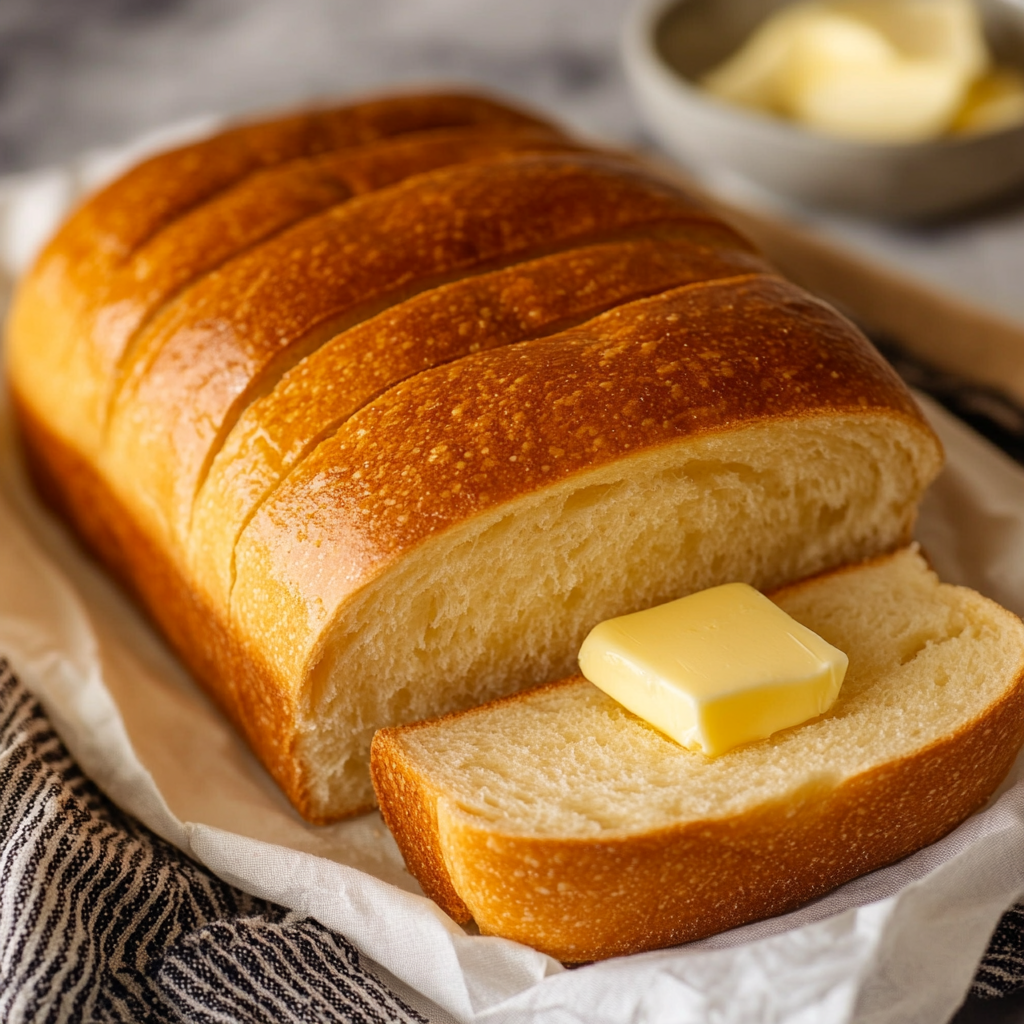I first encountered Japanese rice bread during a spring visit to Kyoto, where a local café offered a unique variety of gluten-free loaves. Expecting something dense and dry, I was stunned at my first bite. It was nothing short of magical — soft, fluffy, slightly chewy, and warmly comforting. The mild sweetness of rice flour paired with the aroma of freshly baked bread created a nostalgic memory that followed me home.
After returning, I found myself yearning for that exact experience. Most bread recipes I knew relied heavily on wheat flour, and gluten-free versions often turned out crumbly. But Japanese rice bread changed the game. It’s light, moist, and incredibly satisfying. Over the years, I’ve perfected this recipe in my own kitchen, and today, I’m excited to share it with you. Whether you’re exploring gluten-free alternatives or simply seeking a new bread adventure, this Japanese rice bread is bound to impress.
Why Everyone Loves Japanese Rice Bread
Japanese rice bread, known locally as komepan, is more than just a wheat substitute — it’s a flavorful experience rooted in innovation and simplicity. Here’s why home bakers and health enthusiasts rave about it:
- Gluten-Free Goodness: Ideal for celiacs or those cutting gluten.
- Pillowy Texture: The rice flour yields a tender, moist crumb.
- Mild, Versatile Flavor: Pairs well with both savory and sweet spreads.
- Easy to Digest: Rice-based dough is gentle on the stomach.
- Simple Ingredients: No obscure ingredients, just wholesome basics.
Ingredients for Japanese Rice Bread
To make an authentic Japanese rice bread, you’ll need the following:
Main Ingredients:
- 2 cups rice flour (preferably superfine white rice flour)
- ¼ cup potato starch (helps with binding and moisture)
- 2 tbsp sugar (optional, for light sweetness)
- 1 tsp salt
- 2 tsp instant yeast
- 1 ½ cups warm water (around 110°F / 43°C)
- 2 tbsp olive oil (or any neutral oil)
Optional Add-ins:
- 1 tsp apple cider vinegar (aids in texture)
- 2 tbsp milk powder (adds richness)
- 1 tsp xanthan gum (improves structure, especially without gluten)
- Sesame seeds or herbs for topping
Ingredient Variations and Substitutions
Customizing this bread is easy and fun:
- Flour Swap: Use brown rice flour for a nuttier flavor or combine with sorghum flour.
- Sweet Version: Add a tablespoon of honey and raisins or dried cranberries.
- Savory Twist: Mix in chopped herbs, shredded cheese, or garlic powder.
- Dairy-Free: Skip milk powder and use water or a plant-based milk alternative.
- Oil-Free: Substitute applesauce for oil to reduce fat content.
How to Make Japanese Rice Bread?
Step 1: Prepare the Yeast Mixture
In a large mixing bowl, combine warm water, sugar, and yeast. Stir lightly and let it sit for 5-7 minutes until foamy.
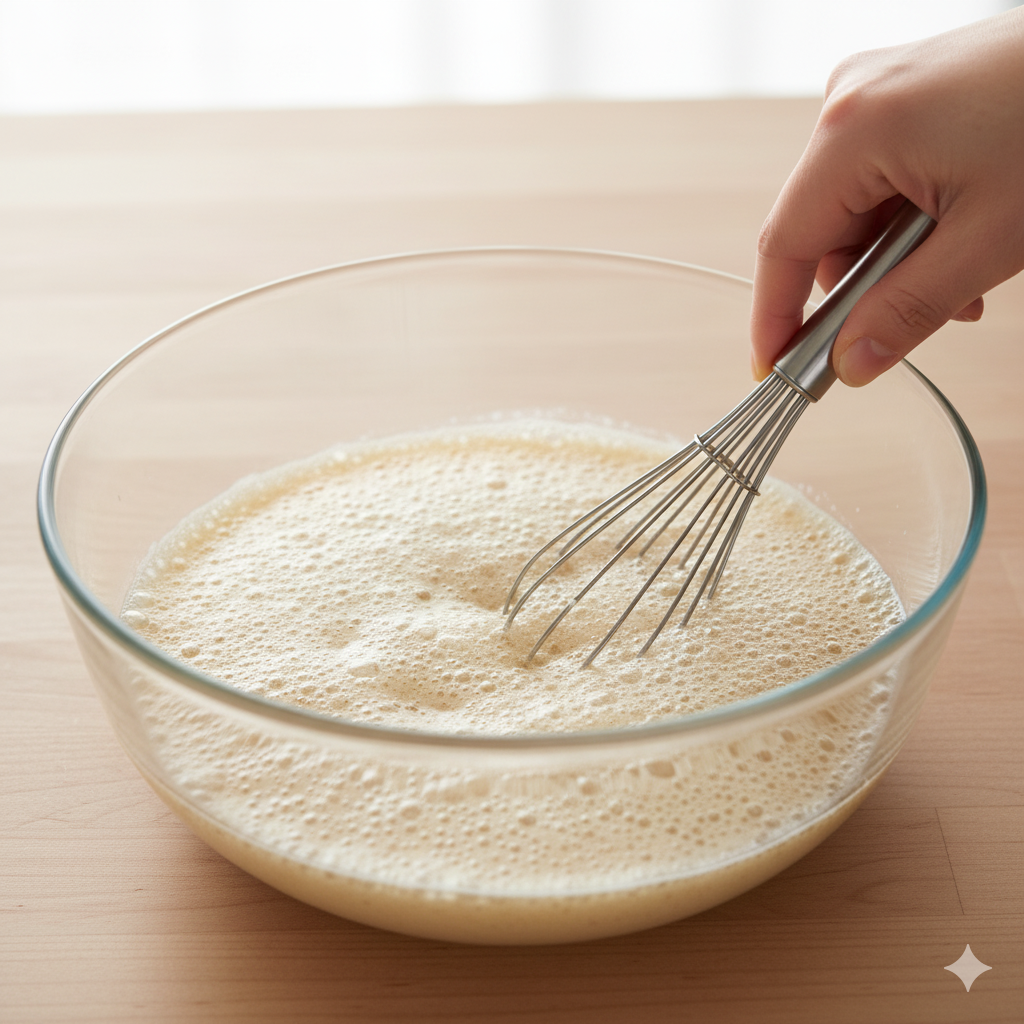
Step 2: Mix Dry Ingredients
In a separate bowl, whisk together rice flour, potato starch, salt, and any optional dry ingredients (e.g., xanthan gum, milk powder).

Step 3: Combine Wet and Dry
Gradually add the dry mix into the yeast mixture. Stir using a hand mixer or wooden spoon until smooth. Add olive oil and mix again until the dough is thick but pourable.
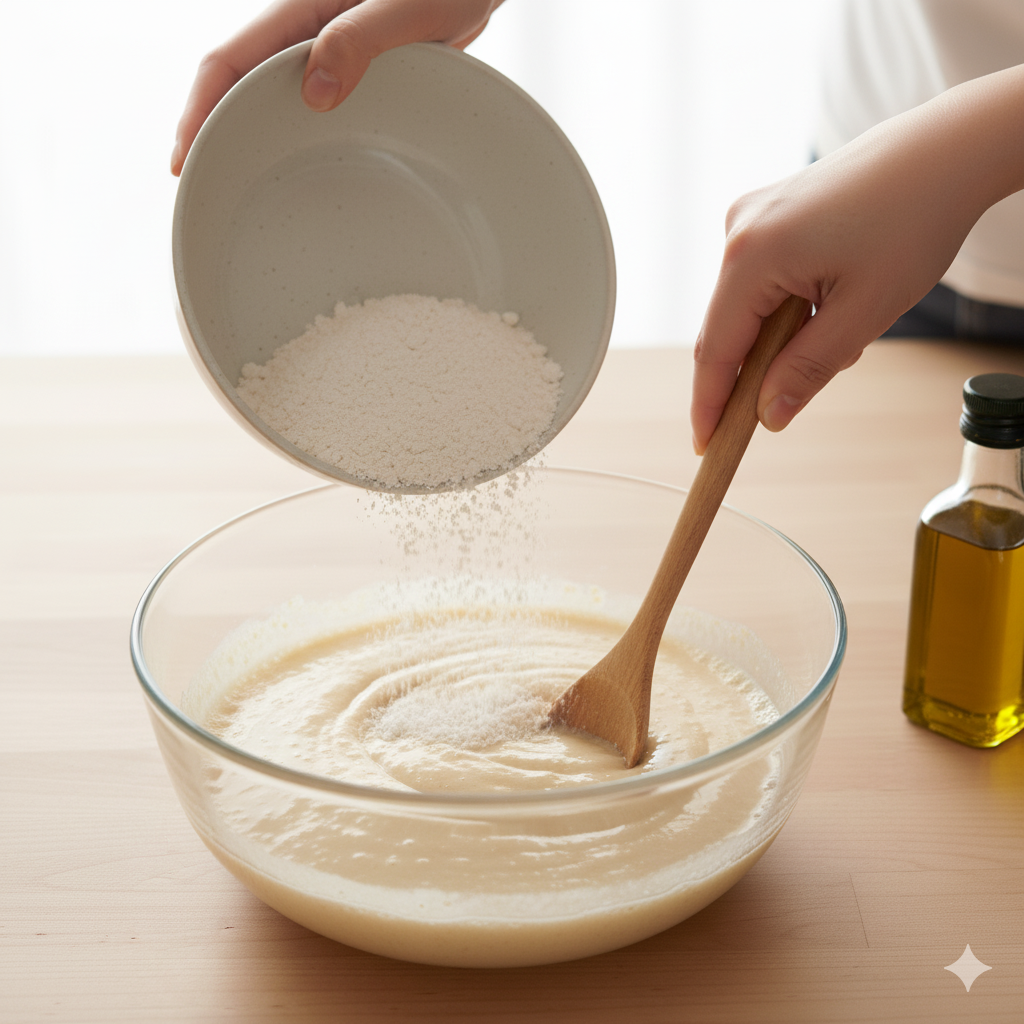
Step 4: First Rise
Pour the dough into a greased loaf pan. Cover with a damp towel or plastic wrap. Let it rise in a warm place for about 45–60 minutes until it nearly doubles in size.

Step 5: Bake
Preheat your oven to 375°F (190°C). Once preheated, place the loaf pan in the center of the oven and bake for 45–50 minutes or until golden brown on top and a toothpick comes out clean.
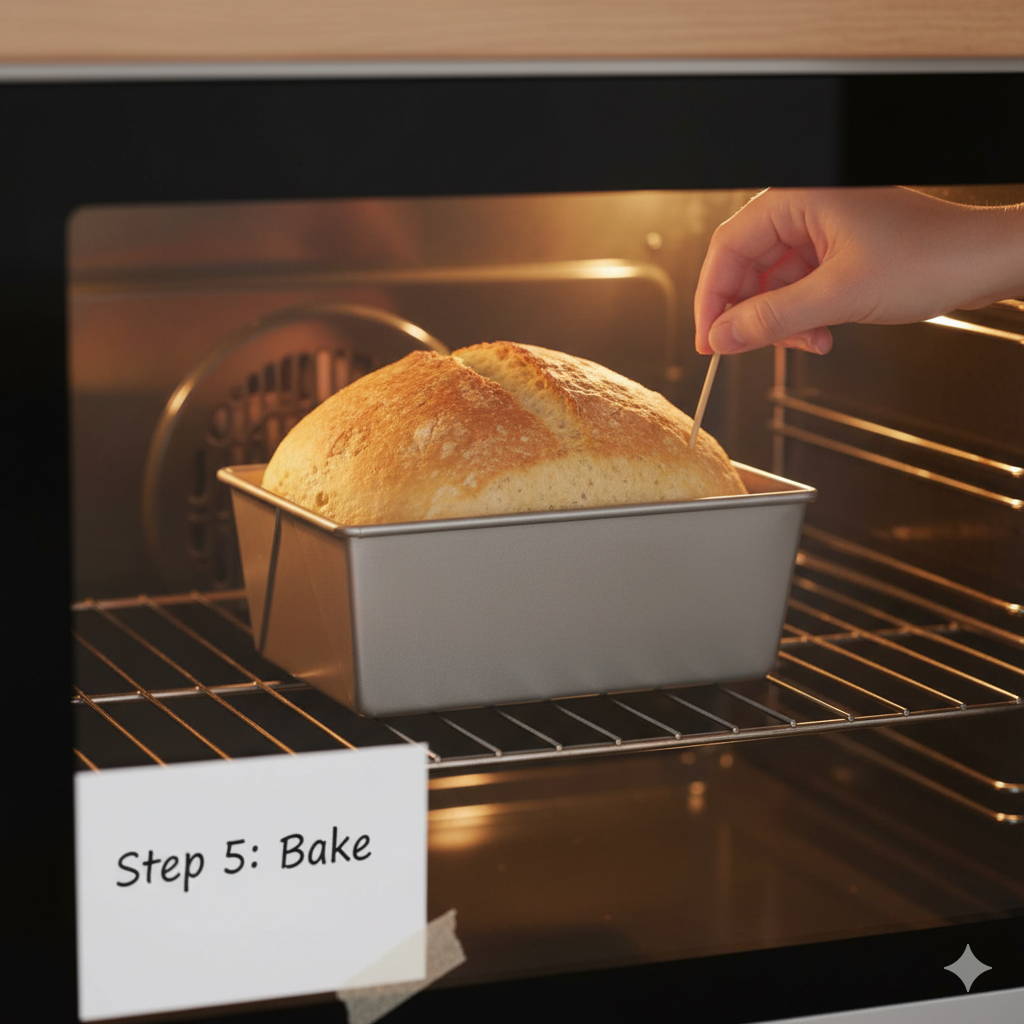
Step 6: Cool and Serve
Let the bread rest in the pan for 10 minutes before transferring to a wire rack. Allow it to cool completely for the best texture.
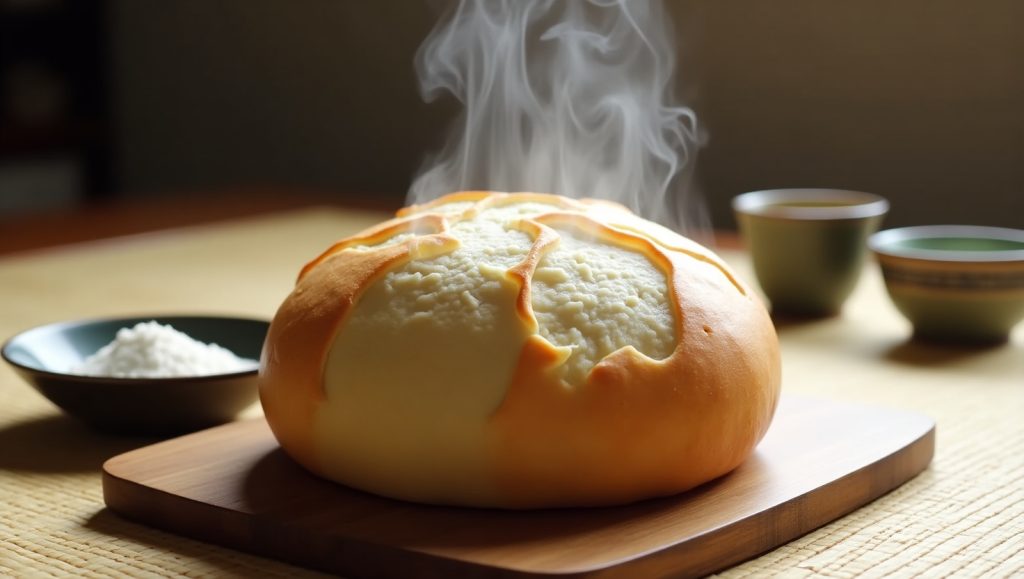
Pro Tips for Perfect Japanese Rice Bread
- Warm Water Matters: Ensure the water is warm, not hot, to activate the yeast properly.
- Don’t Overmix: Over-stirring can result in a gummy texture.
- Let It Cool: Cutting the bread too soon may make it gummy. Allow it to cool for optimal structure.
- Store Smartly: Keep it in an airtight container for up to 3 days or freeze slices individually.
Final Thoughts on Japanese Rice Bread
Japanese rice bread is the ultimate harmony between comfort and innovation. Whether toasted with jam for breakfast or used for a sandwich, it offers a refreshing change from traditional loaves. And the best part? It caters to everyone — whether you’re gluten-sensitive, health-conscious, or just an adventurous home baker.
Once you’ve mastered this recipe, don’t hesitate to explore other bread recipes like Keto Sourdough Bread, Lard Bread, Jamaican Hard Dough Bread, or the flavorful Rougamo Bread. These bread styles each tell their own story, just like this Japanese rice bread will soon be part of yours.
Japanese Rice Bread Recipe – A Soft, Gluten-Free Delight Inspired by Tradition
Experience the gentle warmth and pillowy softness of Japanese Rice Bread (Komepan) — a traditional-inspired, naturally gluten-free loaf made with rice flour and simple pantry staples. This bread is perfect for those who seek a light, moist texture without the heaviness of wheat. Easy to make and incredibly versatile, it’s ideal for breakfast toast, sandwiches, or a cozy tea-time treat.
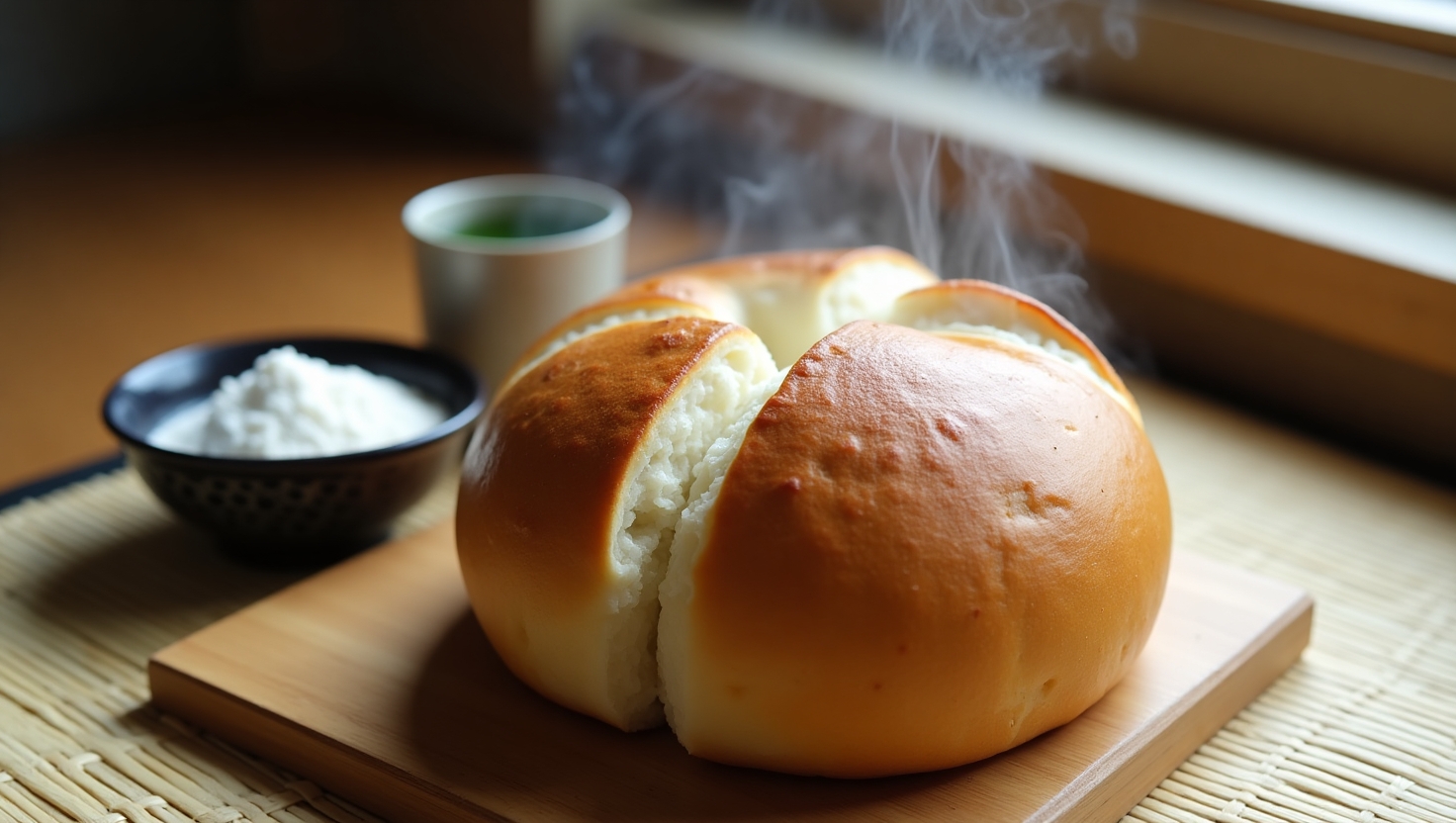
Ingredients
Main Ingredients:
Optional Add-ins:
Instructions
-
In a large mixing bowl, combine warm water, sugar, and yeast. Stir lightly and let it sit for 5-7 minutes until foamy.
-
In a separate bowl, whisk together rice flour, potato starch, salt, and any optional dry ingredients (e.g., xanthan gum, milk powder).
-
Gradually add the dry mix into the yeast mixture. Stir using a hand mixer or wooden spoon until smooth. Add olive oil and mix again until the dough is thick but pourable.
-
Pour the dough into a greased loaf pan. Cover with a damp towel or plastic wrap. Let it rise in a warm place for about 45–60 minutes until it nearly doubles in size.
-
Preheat your oven to 375°F (190°C). Once preheated, place the loaf pan in the center of the oven and bake for 45–50 minutes or until golden brown on top and a toothpick comes out clean.
-
Let the bread rest in the pan for 10 minutes before transferring to a wire rack. Allow it to cool completely for the best texture.
Nutrition Facts
Servings 4
- Amount Per Serving
- Calories 135kcal
- % Daily Value *
- Total Fat 3g5%
- Saturated Fat 0.5g3%
- Sodium 180mg8%
- Total Carbohydrate 26g9%
- Dietary Fiber 1g4%
- Sugars 1g
- Protein 2g4%
* Percent Daily Values are based on a 2,000 calorie diet. Your daily value may be higher or lower depending on your calorie needs.




